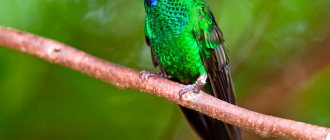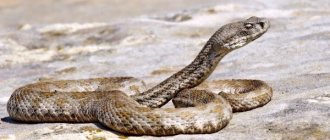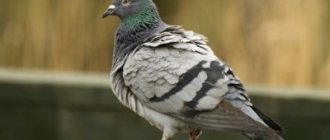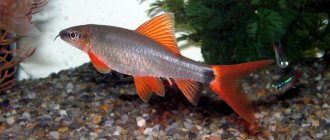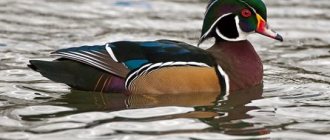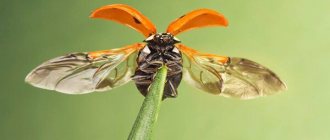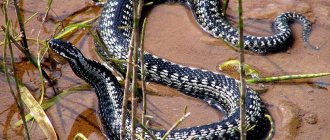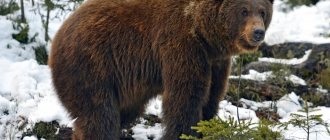The dove is a bird that has not only lived in close proximity to humans since ancient times, but is also one of the first to be domesticated. And not for economic purposes.
For humans, this is the most familiar bird and its habitat in the city has long been so familiar that it has simply become invisible.
English Cross Pigeon
The second name of this breed is “Pigeon Nun” - the bird received it for its black and white plumage and original “hood” of feathers, reminiscent of clergy. The breed was bred in Great Britain. Purpose – decorative. External signs:
- The main color is white.
- The color of the head, apron and long tail feathers is black.
- The boundaries between differently colored areas are clearly delineated.
- Eyes – pearl color. The pupils are extremely small.
- Dense and short body, convex chest, broad shoulders. The neck is medium. Height – 23-25 cm.
- The head is large, the forehead is high. There is a luxurious comb on the head.
- Meek beak, 1 cm long.
- Paws without feathers. Color – bright red.
The breed was originally called “German”. When the “monks” spread across the territory of Russia, they received a second name – “crusaders”. This is connected with the flight of birds - when they open their wings, you can see a cross on the bottom of them.
The breed was originally bred as a racing breed, but their unusual appearance overshadowed their racing abilities. However, “monks” can easily be used for their original purpose - to scare birds hiding in the trees.
Features and advantages of “monks”:
- friendly and sociable;
- obedient and neat;
- unpretentious;
- affectionate.
Postal (sports)
As the name implies, carrier pigeons were bred by people specifically to deliver mail over long distances.
English quarry
The breed originated from Asian quarries. Their origin can be seen in the skin folds around the beak and eyes.
Belgian postal
Belgian homing pigeons are the fastest pigeons of all known breeds. All this is thanks to the wide chest, small tail and streamlined plumage.
Old German gull
These pigeons got their name for their resemblance to another beautiful bird – the seagull. This breed comes from Germany. Pigeons originally had a pattern that made them look like wild seagulls. Later, after lengthy selection work, the color of the breed changed, but the name “old gull” remained.
External characteristics:
- The plumage is white.
- The beak is short.
- Small body. Dense and round body. Proud posture.
- Plumage – black, blue, red, yellow.
This breed is bred for decorative purposes, but many representatives of the breeds can compete with flying pigeons.
Features of the Old German Gull:
- demanding conditions of detention;
- low viability;
- capricious regarding feed;
- fertile, but cannot feed the chicks without human help;
- active and energetic;
- become attached to the owner.
This breed attracts the attention of pigeon breeders with its harmony of colors and shapes. The bird is very graceful, looks gentle and truly “airy”.
Review of domestic breeds
More than a quarter of all breeding pigeons in the world were bred in Russia. Among them, end species are known: Nikolaev and Kirovograd lilac. We offer a list of the most popular and highly valuable breeds of domestic birds.
- Kasany. These birds are very diverse in subspecies, have different colors, head shapes, and feather structures. There may be a crest on the back of the head and feathering on the limbs. The color can be monochrome, but color combinations are more common. Bird weight – up to 600 g. They get along well with people, have a good memory, and are trainable. Capable of performing various somersaults in the air for many hours in a row. The flight style, like that of a butterfly, is distinguished by the ability to enter a column with a turn.
- Armavir white-headed cosmachi. They belong to the group of fighters, they can perform various somersaults and flap their wings. The size of the birds is quite large, the body is wide, narrowing in the tail area. The head is always snow-white, there may be a forelock that resembles a mane in shape. The neck is graceful, arched, and short. The wings are pressed tightly to the body, and at the end they lie on the tail. The latter has 12 tail feathers. The limbs are well feathered. Pigeons of this breed are well built.
- Volga Redbreasts. Small in size, small representatives are valued in this breed. The physique is proportional, the chest is wide, raised up, the forehead protrudes, there is no forelock. The wings have long plumage, wide, almost reaching the ground. The limbs are short. The color has a shiny sheen, usually a cherry or lemon tone throughout the entire body, except for the snow-white cheeks, belly, wings and areas of the throat and tail. There is a purple tone in the chest and neck area. This bird is considered one of the most graceful in the world.
- Voronezh white-throated. They are related in appearance to racing pigeons, are of medium size, lean, and athletically built. The chest is wide and arched. The head is long-oblong, its color is gray or snow-white. A beard and forelock are required. The neck is thick, the wings are well developed, elongated, well-fitting, and converge at the tail without intersecting. The tail is straight and bushy, and the limbs are shortened. The color is blue, with a gray tint. It takes off vertically and lands in a circle.
- Grivuns. They are also called Permians, they are classified as a species of high-flying birds. They are large in size, their build is very proportional, their muscles are well developed. The silhouette is smooth, but low, the chest is wide. The wings meet in the tail area, but do not cross. The tail has 12 tail feathers, straight and narrow. The limbs are short. The color is snow-white, there is a brown spot in the shape of a triangle on the occipital area. Experts note the high quality of the flight, the duration is up to 12 hours. High-flying qualities allow you to soar high and get lost from sight. Despite its large size, it is a very elegant pigeon, harmoniously built.
- Dubovskys. They belong to the high-flying group, their size is average, their body is slightly elongated. The chest protrudes, the shoulders are broad. The back of the head has a tubercle, the neck is arched. The limbs are short and have no feathers. Color blue-gray, blue, brown. There are spots on the chest, tail and neck. The gray representatives are more evenly colored than the gray ones. There are individuals of a pure snow-white hue. The flight of these pigeons is circling and can last up to 9 hours. This breed is excellent at navigating the terrain and never gets lost.
- Coffee tumblers. They are also called rollers; in fact, they are not a breed, but a group of birds that are distinguished by incredibly impressive flight qualities. Birds are capable of performing a variety of somersaults: they tumble over their heads, over their tails, over their wings. Birds are highly trainable. They were bred in Tula from an old breed of rooks. Representatives of the Turmans are classified as fighting animals. The size of the pigeon is medium, the occipital and frontal parts are quite massive. There is a crest in the parietal area, the tail is small and continues along the line of the back. The colors vary, but the plumage is thick and always quite bright. The most common ones are brown-red with green on the neck. The flight is filled with various stunts at high altitude.
- Melitopol blown ones. They are classified as high-flyers, their seat is low, the body size is medium, the limbs are shortened, without feathers, stockings may be present. The neck is thick, the chest is wide. The feathers are shiny, thick, and the color can be varied. The wings reach the tail and do not fit too tightly to the body. It does not fly for very long - up to 3 hours.
- Sickle reversible. The flight of this breed is not very high, in addition, it does not differ in duration, but is very interesting due to its specific trajectory. In flight they describe the shape of a moon or crescent. They are quite massive in appearance, and their plumage can be varied.
- Mozdokskys. Bred in the Caucasus, they do not yet have a strict breed standard, but there are already requirements. Plumage with a white tail and head, the main color is whitish, there are fawn-lemon and black. The forelock is discarded, the limbs are feathered. This breed is not a decorative breed, but a flying breed.
- Leninakanskie. They soar to great heights, at which they perform various flips, the flapping of their wings being very loud and audible on the ground. The size of the birds is medium, the body is streamlined, there is a forelock, the tail is of an even type, without edge. The color is different, but always rich: black, snow-white, marble, red, yellow. They are very hardy, fly for up to 8 hours continuously, love freedom, and are not kept in cages.
- Krasnodar slaughterhouses. The Krasnodar region gave birth to a very spectacular and popular breed of fighting medium-billed and fighting long-billed. Both of these varieties are identical in everything except the length of the beak. The birds are not capricious in their care, the maternal instinct is preserved. They fly quite high, for a long time, and play a lot in the air. The breed has long gone beyond its native region and is distributed throughout Russia. The plumage palette is quite diverse, in addition, there are different patterns on the feathers. They can be either forelocked or toothless. The build of the pigeons is harmonious, powerful, medium size. The head is lean, the forehead is round, the chest is of medium width.
- Blagodarnensky. Also bred in the Krasnodar region, they are classified as fighting animals, distinguished by luxurious feathers and decorations on their heads. The size of the birds is medium, the build is powerful but graceful. The head may have one or two forelocks, as well as a rose-shaped nose. The limbs are not long, with short feathers, the wings are elongated, resting on a dense tail with 12 tail feathers. The color of the lower part is red, the upper part is snow-white or white with red specks. They were developed not very long ago, so they are not yet widely used.
- Black and piebald tumbler. Bred in Kaluga, belongs to the fighting group. The size of the birds is small, the body is elongated, wider at the shoulders. The landing is rather low. There are tufted and tufted individuals, the tail is fan-shaped, raised up, tail feathers - at least 12 pieces. The limbs are bare, magpie color, black and white. The flight is a circling type, in the process it makes somersaults and falls of a sharp type with the same sharp rise to altitude. Despite its rather standard appearance, the breed is highly prized for its flying qualities.
- Kamyshin pigeon. They belong to the rutting variety, the size of the birds is large, the physique is powerful, the muscles are strong. The silhouette is proportional, the head is round, toothless. The wings are elongated, hanging low, the tail is high and raised. The number of tail feathers varies from 15 to 23. The color is most often jet black, excluding the wings, which effectively contrast with the white plumage; sometimes the plumage of the lower part can be white. In addition to the main color, there are also shades of coffee, silver, fawn, and red. The flight qualities are excellent, they soar high and fly for up to 6 hours continuously. They become very attached to the flock, fly closely, and are well oriented in the area. They have good immunity and endurance.
- Ochakovskys. They are classified as high-flying, medium in size, but small and large individuals can be found. The body is elongated, well developed, the seat is low, the chest is wide, the back is in line with the tail. The tail is long, there are at least 12 tail feathers. The limbs are bare, the color of the feathers is gray, snow-white, black, the plumage is smooth, soft to the touch, and fits well. They fly alone at altitude and can soar for a very long time if trained. Terrain orientation is average.
Saxon field
In the appearance of this breed, an attentive pigeon fancier will immediately discern the features of a rock pigeon. And not in vain - the wild rock pigeon was used in the selection of Saxon field work. They are distinguished from their wild ancestor by paired white stripes on their wings and long feathers on their legs. It is the luxurious plumage of the legs that gives this breed its original appearance.
Flight of bird
Pigeons have special flying abilities that are different from other birds.
The speed that a pigeon is capable of reaching can reach 180 km/h, and the distance covered in one day is up to a thousand kilometers at an altitude of 3000 meters.
This explains the fact that since ancient times pigeons have been revered as good postmen.
- Winter birds | Wintering birds
- Owl - habitat, characteristics of species, family, diet, life expectancy (110 photos + video)
Cormorant - how to recognize where it occurs, reproduction, appetites + 103 photos
Well, in the event of an attack in the air by a predator, the dove simply folds its wings and falls down like a stone. A sort of living fighter plane.
Volzhsky tape
The Volga breed is considered one of the most beautiful. It was bred by Volga pigeon breeders at the beginning of the 20th century. The bird is not only beautiful, but also has a breathtaking circling flight; it can soar in the air for 2-3 hours. It is distinguished by its graceful habits and colorful plumage.
The breed has an original appearance - they have a unique body structure and bright plumage. External signs:
- proud and confident posture;
- flat crown and nut-shaped head;
- dark eyes with narrow eyelids;
- wide and convex chest;
- short feathered legs;
- plumage – red-brown with white, less often – light brown with white.
At the age of one year, the Volga ribbon pigeon chooses a mate - one for life.
Breed Features:
- unpretentiousness;
- good flight qualities;
- caring parents.
The main thing that attracts the appearance of this breed is the long feathers on its legs and beautiful plumage. Color areas have clear boundaries. Cherry or yellow - neck, back, chest, tail, rump. And the cheeks, throat, wings, eyebrows, belly and legs are white. Thanks to the successful combination of colors, Volga pigeons look elegant and elegant.
Reproduction
A dove union created once is a union for life. The couple takes care of each other in every possible way and even incubates eggs together, of which the female lays 2 per clutch.
Moreover, there is no very specific time when this is done - usually from March to October.
- Crane - origin, description, habitat and lifestyle, nutrition and reproduction + 79 photos
- Heron - 89 photos of a very beautiful and rare bird
- Swallow - features, lifestyle, mating season and lifespan (93 photos + video)
The newly emerged chicks cannot live autonomously and independently for another month, requiring attention, care and feeding. And only after six months they become sexually mature and are able to create their own mate.
Due to their defenselessness and the danger of wildlife, pigeons rarely live more than five years. With proper care, proper nutrition and maintaining health, it will not be difficult for a bird to live 15 years. There are known cases of even greater longevity.
Peaceful pigeons
Nothing is known for certain about the breed of dark pigeons. The bird is distinguished by its slender body and original color, which is why they are often called speckled or calico. Colored feathers are randomly arranged along the white plumage, which is the main one. They have a strong constitution, pear-shaped body and short legs.
The bird does not reproduce well in captivity, so its numbers are small. The homeland of speckled pigeons is the south of Crimea. It is assumed that they were brought here during the Russian-Turkish war.
Colored feathers, asymmetrically scattered across the white plumage, are red, yellow, blue, and black. Other advantages of the breed:
- perfectly oriented in space;
- friendly and obedient;
- hardy and unpretentious.
Bohemian swallow
The Bohemian space swallow was bred in the Czech Republic. It is distinguished from other pigeons by the special checkerboard color of its wings and large feathers on its legs. Birds can have white and black or white and brown plumage. In addition to the unusual pattern on the wings, there is another distinctive feature - the cockade on the head.
The bird owes its name to its extraordinary beauty - when it was brought from the Czech Republic, Russian pigeon breeders gave it the name “magic swallow” - for its special external attractiveness.
Chinese gull
The breed is very popular among pigeon breeders. They were brought to Europe from Africa back in the 19th century. It is not clear why they are called Chinese - it is believed that a certain Frenchman, a bird trader, called them that way. It has a rich plumage color, flies well, is prolific and completely unpretentious. They look luxurious, thanks to the beautiful shades - the bird can be white, golden, gray, red, with different combinations of colors.
The bird has a wide, stocky body with thick plumage. She has a round head, a short neck, and a developed chest - convex and round. Legs without feathers, short.
Why is the dove considered the bird of peace?
Even in ancient times, it was believed that a dove was a bird created pure and good by God himself, since it does not have bile, which means there is nothing bad. In this regard, many nationalities believed that this bird was sacred, and therefore associated it with bountiful harvests. The Bible also mentions a dove that brought peace to people.
Interesting to know! The “dove of peace” symbol appeared thanks to the world famous artist P. Picasso, who presented his next painting in 1949. The canvas showed a dove with an olive branch in its beak. From that moment on, the image of the dove as a bird of peace was finally established.
Jacobins
These amazing birds come from India. Their ancestors are the Indian white-headed tumbler and capuchins. They came to Europe in the 16th century. Second homeland is England. The main distinctive feature and decoration is the original feather collar, which surrounds the head and covers the neck.
Appearance features:
- slender and long neck;
- a long tail;
- short legs;
- plumage is of different colors.
There are individuals with golden feathers, with a monk pattern, and speckled. Jacobins fly slowly - their large heads prevent them from developing speed. But they are productive and excellent parents.
Peacock
It is not known exactly where these amazing pigeons came from. But there is an assumption that they come from India. These birds are not adapted for long flights, but they are amazingly beautiful and graceful. They are neat and graceful, they behave in an important and noble manner. Most of the time they move along the ground, spreading their tail feathers widely - for this feature they are called peacocks.
Peacock pigeons have a small head and large dark eyes. The beak is small, flesh-colored or reddish. Paws are red. The plumage is different - yellow-white to gray-blue. The most unusual and attractive feature of peacock pigeons is their luxurious tail, which becomes more luxurious the more feathers it contains.
Nutrition
Pigeons are very voracious.
Those watching them in squares and parks can see them “chewing” all the time, even if no one feeds them, and the area around is entirely asphalt and concrete. A naive question involuntarily arises: what do pigeons eat? The basis of the pigeons’ diet is plant food: grains, berries, fruits. As well as a large amount of water, which these birds readily consume.
Well, the urban area, even in the absence of complementary foods in the spring-autumn season, is always covered with small plant seeds.
Sharp-crested stone
This pigeon has an unusual appearance. It seems that it simultaneously mixed the features of several birds at once. With its mottled brownish plumage and small body it resembles a partridge, and with its red skin around its eyes it resembles a pheasant. But the most surprising external feature is the long, perky crest.
This breed has short legs and a plump, round body. The plumage is hard but smooth. Due to the peculiarities of its plumage, the bird can fly at very low speeds.
This little pigeon lives in hard-to-reach places. His homeland is Australia. The bird has unprecedented endurance - it can spend long hours in the heat searching for food.
Suits
In the literature on pigeon breeding there are a wide variety of classifications of birds. There was an attempt to divide pigeon varieties by color type:
- color-sided;
- color-breasted;
- color-tailed;
- plain;
- motley.
This breakdown into groups made it possible to combine breed names based on similar external color characteristics. There are different types of colors that are present in a bird's coat.
Golden motley
This unusual bird (of the pigeon family) lives on the islands of the Pacific Ocean. Looks very elegant. Its plumage, shimmering in the sun, shimmers with a golden sheen. The bird, having a limited habitat, eats fruits, berries and insects. Females, unlike males, have greenish plumage. The length of this tropical bird is about 20 cm.
The main feature of the golden motley dove is its feathers. They look so stylish and unusual, as if the bird had been styled at a hairdresser. This type of plumage is associated with the unusual structure of the feathers - it is close to the structure of hair. This elegant bird has turquoise-colored paws, and the skin around the eyes and beak, painted in the same color, harmoniously complement the image of this small but bright bird.
Appearance, description
The crowned pigeon, which lives in Papua New Guinea, is considered the largest representative of this family. Adults weigh between 1.7-3 kilograms. The smallest representatives include the diamond striped dove, which lives in Australia. It weighs no more than 30 grams.
Interesting moment! Pigeons are small birds, growing in length from 15 to 75 cm and can weigh from 30 grams to 3 kilograms.
Pigeons are characterized by a very muscular physique. Their neck is short and their head is small. The wings are relatively long and wide, consisting of 11 primary flight feathers, as well as 10-15 secondary ones, with rounding at the tips. The tail is also relatively long, and can be either pointed or rounded, as well as wide. As a rule, the tail consists of 12-14 feathers, and in crowned and pheasant pigeons - up to 18.
The beak of these birds is generally short, but is found to be of medium length, straight and thin, often with a characteristic widening at the very base. The base of the beak is characterized by the presence of areas of skin not covered with feathers, which are scientifically called cere. The same areas can be observed within the eyes.
Sexual dimorphism in these birds is not clearly expressed, although males are always larger than females. In some species living in the tropics, the feathers of males are more brightly colored than those of females.
The birds have thick plumage, close to the body, of various tones, but not as bright as some tropical species. The legs of pigeons are relatively short, four-toed, with three toes located in front and one behind. This structure allows pigeons to walk on the ground without problems.
It is quite easy to determine whether a bird belongs to the Pigeon family using morphological characteristics, although some species have an external resemblance to birds such as pheasants, partridges, parrots and turkeys.
Important point! Pheasant pigeons are similar in appearance to pheasants, although many people do not know that they are not pheasants, but pigeons.
Pigeons, like some other bird species, lack a gallbladder. Even in ancient times, a similar fact misled naturalists who believed that pigeons do not produce bile. This conclusion was confirmed by one of the theories of the 4 body fluids. In this regard, the absence of bile secretion in pigeons was considered a sign of the “divinity” of the bird. In fact, pigeons secrete bile, but it goes straight into the digestive system.
Pigeons | Jumanji. Animals in the metropolis
Maned
The second name of the bird is the Nicobar pigeon. It has an unusual appearance - like a fabulous phoenix, bright and mysterious. This beautiful representative of the pigeon family lives on the tiny islands of the Indian Ocean.
This island bird has almost no enemies in its isolated biospace. The maned pigeon is heavy to lift - it weighs about 600 g, its length is about 40 cm, and it does not like to fly at all.
The peculiarity of the maned dove is its unique neck plumage, sparkling with azure and emeralds. The “Necklace” resembles a luxurious colored robe. In the sun, the feathers of a maned dove shimmer in different colors. Without the sun, the coloring is muted, the bird becomes more modest and everyday.
Fan-crowned pigeon
Looking at this fabulous bird, you immediately think of birds of paradise and peacocks. This representative of the pigeon family lives in New Guinea. The bird is large and similar to a pheasant not only in appearance - it also does not like to fly, preferring to move on foot. It can take off only at the moment of threat. The weight of the bird is about 2.5 kg.
The main thing that attracts the eye in this bird and makes it irresistible is its unusually beautiful crest. This is a real “crown” – airy and light. Another striking feature is the coloring. The plumage of this bird is blue and slate blue.
Habitat
Pigeons have settled all over the globe with the exception of Antarctica and the Arctic. Statistics show that there are about 5 billion birds in the world.
One of the most common types of pigeons on city streets is the rock pigeon. This species has inhabited almost the entire globe.
Red-necked Pied
The breed has about fifty motley relatives, each of which has unusual plumage. All varieties of pied pigeons are very fond of fruits. This bird lives in Southeast Asia - Sumatra, Java and Bali. The wild pigeon prefers life in the trees and comes down to the ground in exceptional cases.
The bird is distinguished by the unusual purple-pink color of its neck, head and chest. Their plumage is predominantly pink, olive and dark green.
The rest of the body has a modest gray plumage, on which the purple looks especially bright. The length of the birds is 18 cm, which is much smaller than the usual rock pigeon - it reaches a length of 36 cm. The legs are red, the beak is green-yellow.
Bright
Representatives of this type of color stand out among their peers. There are red pigeons, distinguished by a purple-brown tint. Pink, green, yellow, olive birds are very beautiful. The red color of the plumage looks very impressive. Red birds are often white-tailed or with white speckles on the head, with bluish and silver tints. The breeds with pale blue, gray-blue, fawn, and beige plumage are very beautiful. In addition, many breeds are multi-colored, piebald, and combine several shades in a brindle or spotted pattern.
There are breeds of pigeons in only one or two color variations. At the same time, many varieties are represented by a huge variety of possible shades within the breed.
Mariana Pied
The second name for pigeons is fruit pigeons. They live on the islands of the Mariana archipelago. They are distinguished by their bright plumage. There is a pink spot on the head, the chest is blue, the belly is violet-orange, the wings are green. This bird, among fifty species of motley pigeons, is the most ardent and beautiful. Length – 20-24 cm. The bird lives in trees, feeding on juicy fruits.
Pink-headed Pied
This exotic bird lives in Southeast Asia. The dove has an interesting color - it has a bright pink face, and the back of its head is dark green. The wings and tail are also green. There are white circles near the eyes. Eye color is red-brown. The throat is black-brown, and the chest and belly are white. The beak is yellow. The bottom of the tail is red-brown. The unusual plumage is bright and colorful, making this Asian pigeon unusually beautiful.
Features of the pink-headed pigeon:
- It practically does not breed in captivity, so it is rare in Europe. They were first brought here in 1870, but the birds never produced offspring.
- Both the female and the male incubate the eggs, taking turns.
- They eat only fruits and berries.
Little is known about the life of this bird - the bird has not been studied enough.
Why do people breed pigeons?
Of course, now this activity is not as widespread as it used to be, but some are still breeding this bird. If previously the purposes were exclusively for food, now people breed pigeons to participate in exhibitions or sports competitions.
Pigeons are quite smart birds. Scientists have proven that they are able to think and easily switch from one task to another.
Domestic pigeons can live up to 20 years. In the wild, approximately 5-6 years. This variation in time is explained by careful care and the absence of dangers from predators when kept at home.
African green
It lives in the subtropics of Africa - south of the Sahara. The bird's plumage serves as excellent camouflage. The color of the pigeon is green, the shade is olive and yellowish.
If an African pigeon is kept in captivity, then over time the pigment of the feathers is destroyed, and the bird acquires a gray or yellowish color.
Pigeon farming is losing its position with the development of civilization, but thanks to enthusiasts, this industry continues to develop. Decorative pigeons stand on their own in pigeon breeding; they are kept mainly for their amazing beauty - flight qualities are relegated to the background.
0
0
Copy link
